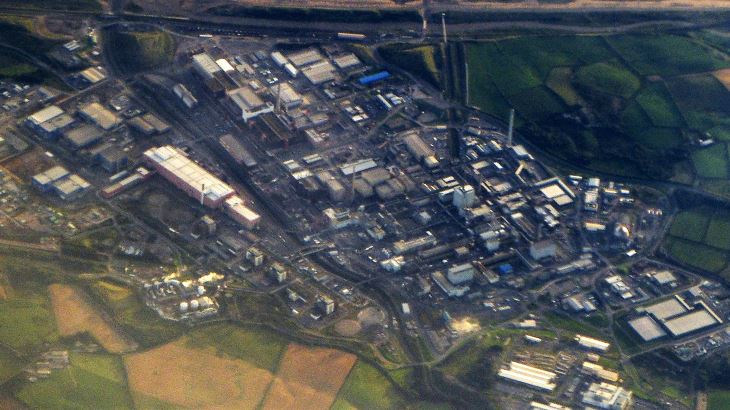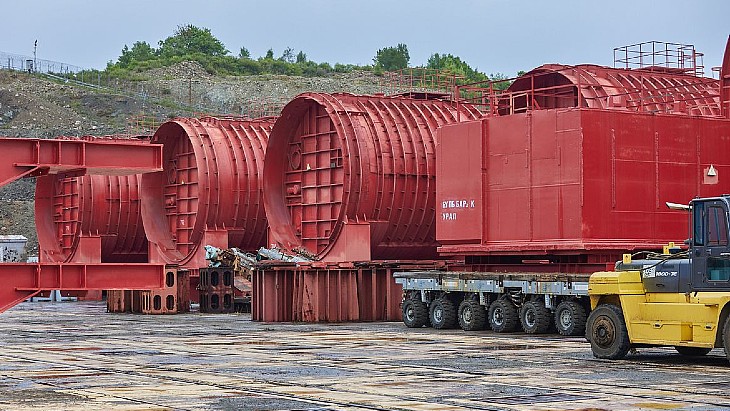UK reports on radwaste management and disposal

The Nuclear Decommissioning Authority (NDA) works to ensure that the UK’s nuclear legacy sites are decommissioned and cleaned up safely, securely, cost-effectively and in ways that protect people and the environment, across 17 NDA-owned sites in England, Wales and Scotland. More than 90% of the UK Radioactive Waste & Materials Inventory (the Inventory) by volume is generated by the NDA estate, covering the full spectrum of wastes contaminated or activated by radioactivity from very low-level to high-level wastes.
The Inventory is the latest national record on radioactive wastes and materials in the UK and is usually compiled by NDA. The Inventory contains information about: radioactive wastes that exist now; radioactive wastes that will arise in future; and radioactive materials, which are radioactive items that are not classed as waste now but may be in future if no further use can be found for them. Updated every three years, the Inventory is a snapshot of wastes and materials at a specific point in time, called the ‘stock date’.
For the GDI, the Inventory is undertaken by the developer Radioactive Waste Management Limited (RWM) and called the ‘UK Derived Inventory’ or ‘Inventory for Geological Disposal’. It is also updated every three years and is aimed specifically at identifying the wastes and materials that will need to be stored in the GDI.
Radioactive waste
The strategy will apply to all radioactive waste generated within the Nuclear Decommissioning Authority group, including materials that may become waste at some point in the future. It provides a framework for making decisions flexibly, BEIS said, to ensure safe, environmentally acceptable and cost-effective solutions that reflect the nature of the radioactive waste concerned and a consolidated position and greater clarity of strategic needs in this area. It promotes cross-category waste management opportunities, supports a risk-based approach to waste management and provides an integrated programme for a suitable and timely waste management infrastructure to support the NDA mission.
The development of the strategy and the integrated approach to waste management it supports is an important input into the government’s Industrial Strategy Nuclear Sector Deal, BEIS said.
“This deal calls for a National Decommissioning and Waste Management Pipeline to give a truly comprehensive view of all major decommissioning and waste management activity across the country. This should promote economic growth through enhanced awareness in the supply chain of opportunities, provide greater resilience in the UK infrastructure and opportunities for inward investment and growth,” it said.
The strategy document states the government’s preferences against each of the waste management lifecycle stages - planning and preparation, treatment and packaging, storage and disposal. The NDA says it will create an integrated programme that builds upon the success of its low-level waste programme.
“The integrated programme will seek to drive changes in waste management behaviour and culture to allow waste producers to flexibly and effectively manage their radioactive waste as well as develop proportionate waste management solutions,” the strategy document states. “The programme will be implemented in prioritised phases with the initial focus on areas such as wastes at the low/intermediate-level waste boundary, waste management culture and packaging."
"Whilst primarily an NDA strategy, this document will also be of interest to other producers of radioactive wastes, radioactive waste management facility operators, suppliers of waste management services, regulators, local planning authorities and communities where radioactive wastes are generated and/or managed”, NDA said.
Geological disposal infrastructure
In January, the government laid before Parliament the draft National Policy Statement (NPS) for GDI, which set out its proposed framework for future development consent orders for such a facility in England.
A GDI consists of specially-engineered vaults and tunnels located deep underground that are designed to host the higher activity radioactive waste that cannot be stored at existing surface facilities on a permanent basis.
The BEIS committee was designated to carry out parliamentary scrutiny of the draft NPS as required under the Planning Act 2008.
In its report the committee says that most of the evidence received on the scope of the draft NPS was positive.
“We heard from several stakeholders that the draft NPS was on the whole fit for purpose and adequate, although the same evidence submissions also suggested improvements to the Assessment Principles and Impacts,” it said. “In addition, we found that the draft NPS satisfactorily reflected lessons improvements from previous failed attempts to find a suitable location for geological disposal and we support the voluntary approach chosen for the siting process.”
The committee says the draft NPS is “fit for purpose” and contains adequate level of guidance and details needed for the developer, the Planning Inspectorate and the Secretary of State to put forward and make recommendations on development consent orders.
“We welcome the fact that the NPS and the separate but relevant ‘Working with Communities’ policy incorporate some of the key lessons from previous unsuccessful attempts to find a suitable location for a GDI,” it said. “Provided that the government takes into account our recommendations aimed at improving the engagement of and benefits to prospective host communities, we support the case for the final NPS to be brought before Parliament for approval,” it said.
Its recommendations cover national parks and areas of outstanding natural beauty; new nuclear build; local community consent; and the Industrial Strategy.
On new nuclear build, it says that successive governments have “for too long left it for future generations” to find a solution to dispose safely of higher activity radioactive waste.
“It is time for a decision. Regardless of whether the government should have embarked upon a new nuclear build programme and regardless of whether geological disposal is the best approach to dispose of waste, any long-term waste management strategy should include waste from new nuclear,” it said.
The committee also recommends that the government works with RWM and CoRWM “to strengthen the justification” for geological disposal in the NPS.
On local communities, it says that “what may be a clear framework to the developer and Planning Inspectorate may not be as easily accessible to a lay audience”. It is of paramount importance, it added, that prospective host communities understand how their ‘right of withdrawal’ interacts with the development consent orders for boreholes and geological disposal.
“We do not suggest that community consent should become an Assessment Principle as we think the ‘Working with Communities’ policy already guarantees to communities that no GDI could be granted development consent without their express approval. However, the NPS as currently drafted does not explain clearly how these two frameworks interact. The government should clarify the degree of priority afforded to community consent in the NPS in a way that is accessible to a lay audience so as to give prospective communities all the tools they need to engage with the siting process,” it said.
_17992.jpg)
_75800.jpg)







_88592.jpg)
_66488.jpg)

